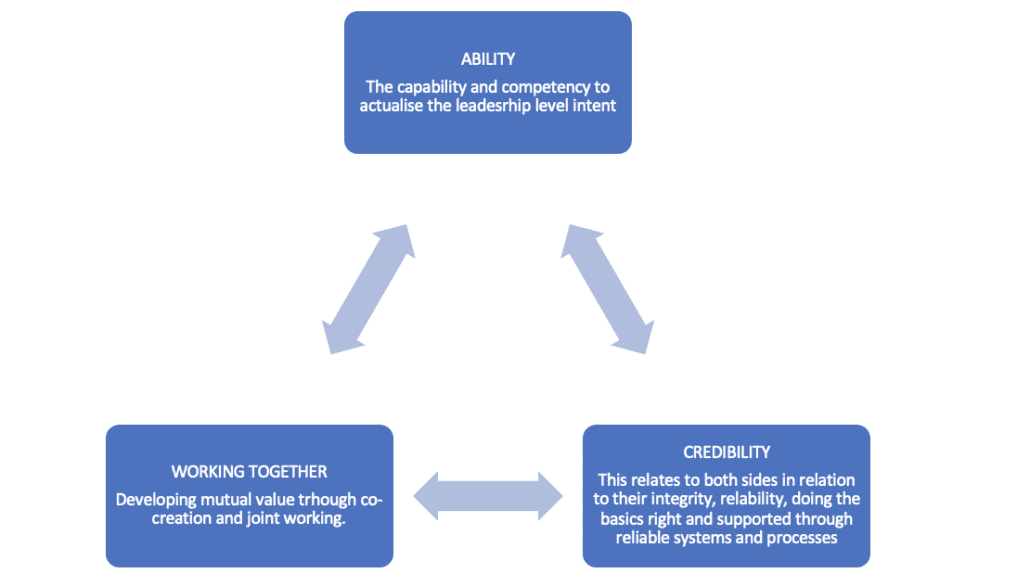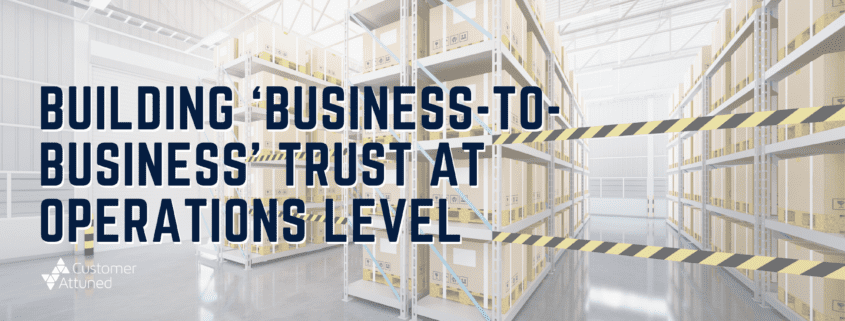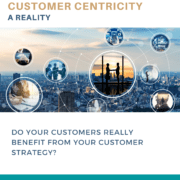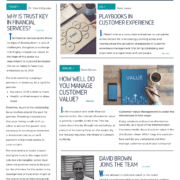Building ‘Business-to- Business’ Trust At Operations Level. Part 3
Building ‘Business-to- Business’ Trust At Operations Level
Let’s take a look at trust development and how to “make it happen” and turn leadership intention into a reality at operations level, focusing on activation and implementation.
Having identified where the relationship resides and how the Trust DNA™ could be deployed, we move to the practical application – making it happen. At operations level they turn intangible trust into tangible trust. This is built on practical and pragmatic experience and a foundation of academic research.
The research identifies a significant number of elements at this level on both the supplier and buyer side. However, three key drivers emerge from the research that have relevance for relationship delivery at this level and between both sides.
Trust at leadership level has a predisposition to be strategic as an intention yet remains intangible in nature. Building business to buiness trust, turning the intention into a reality, falls on the operations level or ‘make it happen’.
The key drivers of building business to business trust:

- Ability: The capability and competency to actualise the organisational level intent
- Credibility: this relates to both sides in relation to their integrity, reliability, doing the basics right and all supported through reliable systems and processes.
- Working together for the co-creation of mutual value.
Let’s take a look at each one and how they can be achieved through their implementation and activation.
We explore each element to develop a blueprint to make it happen at this level of the organisation and between both sides of the relationship.
Relational Ability
This area focuses on the ability of both sides to turn the intention into a reality through their respective capability and competency. In effect, each side knowing their stuff through a demonstration of their capability and competency to turn the intention into a reality.
At this level the demonstration that you know what you are doing and are empowered to do it is a key trust builder. Often the focus is on the supplier side of the relationship, however in this instance we are looking at the capability and competency of both sides – supplier and buyer sides.
The buying side’s capability and competence to turn the intention into a reality is often overlooked or taken for granted. For example: you may have had an intention to improve the relationship through the implementation of digital processes and systems, improving efficiency and releasing cost. As suppliers you have expert capability and competence in this area.
Unfortunately, the buying side does not. Their ability to implement agile change falls far short of the intention. This has a knock-on effect on the cost release and efficiency gains expected, it also opens up a question mark around the buying sides capability, competency and an element of mis-trust could start to creep in.
This can be addressed at the intention stage or through training and development to improve relational ability. Each side needs to be prepared to work with the other to address any potential shortfalls in capability, standing in the way of delivering on the relationship intent and mutual value opportunity.
This may mean putting someone from the supplier side into the buying sides operations team for an agreed period to transfer know how. This act alone would be a significant trust builder at this level.
So, if you are the Client Director, Account Manager, etc make sure you do your due diligence at the intention stage and work with the operations level teams to either: ensure they can do it; or provision is in place to enable them to do it.
Relational Credibility
At an operations level both teams will be looking at their respective track record in the area the intention is trying to develop. Have you done this before and if you have then, what was the level of success? At this stage one side may need to lean into the other for reputational support or to build the credentials if the intention is stretching into new areas or something the other side doesn’t normally do.
This can be as easy as putting in an expert from one side to support the other, or lending the name of one side to the other for the halo effect. This provides the operations teams the necessary credentials to make it happen, in a proactive and positive context.
The emotional buy-in to the relationship and the opportunity on offer through joint commitment, passion and attitude is also important as an indicator of the importance. This can be achieved through good communication, consistently delivered across a number of mediums that the operations team follow or use. This needs to be more than a one-off newsletter or e-mail. It needs to be consistent and long lived, that demonstrates to the ops team we are in this for the long haul and not just a short term ‘box ticking’ exercise.
This is where you can utilise champions from each side of the relationship at this level to own and lead elements of the intention and/or purpose to ensure it happens.
Building Trust Together
Lastly, let’s look at what I think is the most important facet of building trust at this level. A shared understanding between both sides of the relationship operations team around what needs to be done, why, what’s the benefit, and the role they play in making it happen.
Through the shared understanding this translates into the development of a belief in the opportunity that working together could deliver. This starts by getting all of the key players from both sides together to turn the intention into plans to make it happen. This ensures both sides are involved in the co-creation of the plans and briefings to both teams from either side. Once again, the champions from each side play a crucial role in the ownership and leadership of their respective elements of the plans as they develop, the onward briefing and evangelising to the wider team.
It is also important that both side at this level come together to review their progress on a frequent and regular basis both informally and informally. The identification of mutual value creation is reported and celebrated. Conversely, any behaviours, attitudes or detractions from the plans are ‘called out’ and mitigated through co-created alternatives to ensure the intention/purpose is developed or re-calibrated accordingly.
For example: teams maybe working alongside each other for two-three years in pursuit of delivering mutual value identified. During this time commercial pressures from one area may impinge on the relationship’s ability to deliver on the mutual value intended. In this circumstance, it falls on the team champions and leaders to identify alternatives to make up the shortfall or co-create solutions that provide and deliver additional mutual value once again bridging any shortfall.
Building business to business trust can be proactively applied and operationalised. This article outlines the blueprint to make that happen at the distinct operational level of the organisations involved. Making sure there is a pick up from the leadership teams’ intention and relationship purpose to turn them into reality. This is what Customer Attuned delivers for clients; investigation, strategy and people development to embed a tust culture that is meaningful and, crucially, effective at delivering mutual value. Interested in how we can help your organisation? Please contact us.
The previous articles and blogs we have dealt with:
![]() Dr Mark Hollyoake is an expert on B2B Trust, and was recently awarded a Doctorate from Southampton University on the subject.
Dr Mark Hollyoake is an expert on B2B Trust, and was recently awarded a Doctorate from Southampton University on the subject.
Talk to Mark about building business to business Trust in your relationships.
- Leap of Faith by Dr Mark Hollyoake featured in the Journal of Sales Transformation - May 13, 2024
- Stop hiding behind your computer and get out to see your customers! - March 6, 2024
- B2B Trust Research: What are Boundary Spanners? - January 31, 2024






